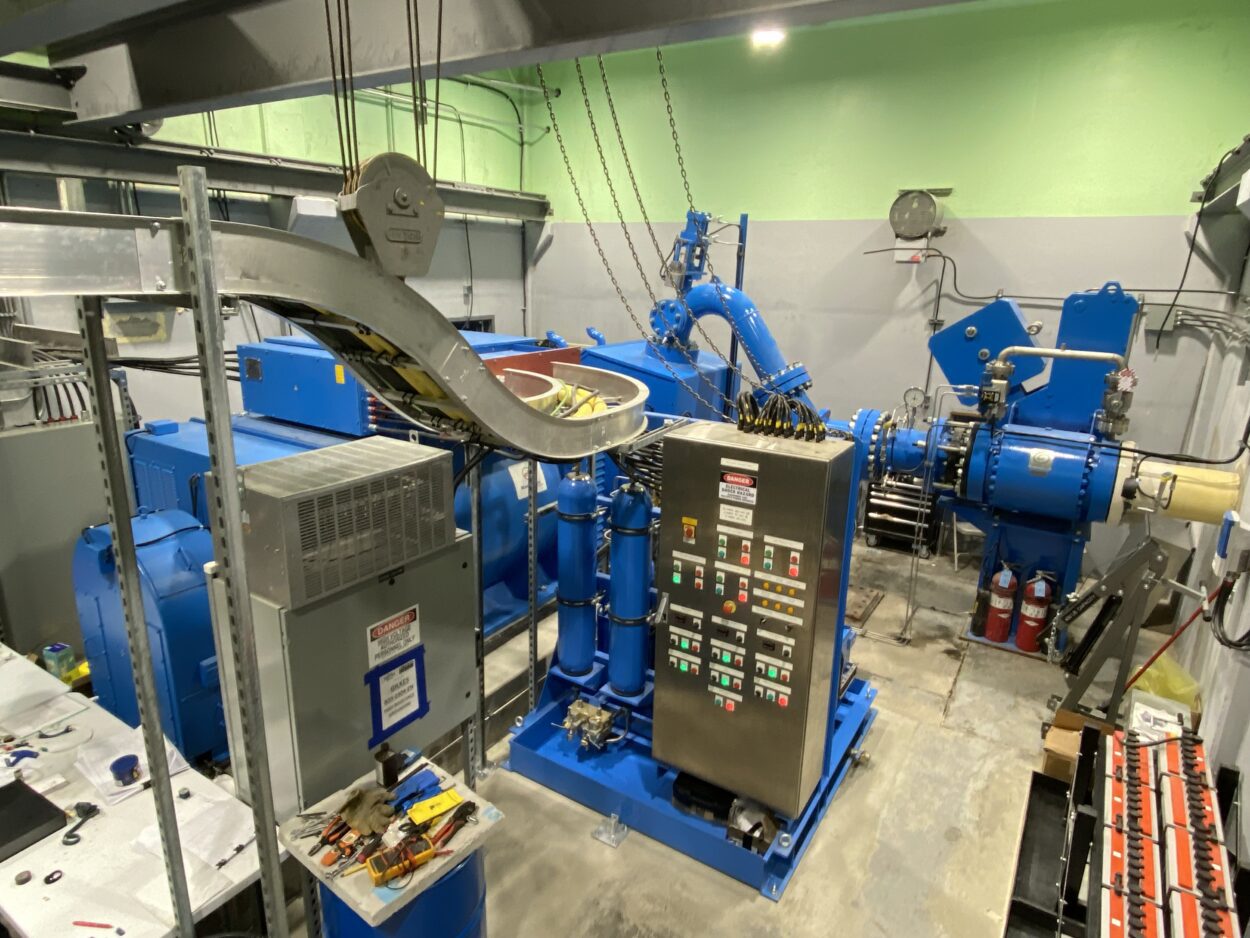
Petersburg’s Borough-owned hydro-power plant upgrade is in its final phase of testing. The plant is fully operational and is back to supplying a portion of the town’s power.
Petersburg’s Utility Director Karl Hagerman has been managing the upgrade since planning began in 2018.
“It’s great to be at the end of this project, and see it come online,” he said. “I’ve been working on it for five years, and it’s pretty satisfying to see it come through and work so well.”
The hydro plant supplies roughly 25% of the power that Petersburg consumes. The power plant is one of two hydroelectric sources for Petersburg’s power, and the cheapest one.
The hydro plant is nearly 100 years old, although existing equipment was installed in the 1950s. Five years ago the Borough hired an engineering firm to conduct a conditions assessment of the equipment. They found that some components of the plant were deteriorating. Hagerman said they recommended an upgrade to keep the facility operational, and hopefully increase the amount of power it generates.
“That equipment they took a look at was built in 1955,” he said. “So we’ve had a really good run with that equipment. And we’re hoping the new equipment will get at least the same amount of time out of that.”
The hydroelectric project cost about 9 and a half million dollars, which was mostly paid for through a bond. The Borough is also hoping for a roughly $3 million grant. In 2021 voters approved an electric utility revenue bond for $7.5 million to pay for the upgrades. Ratepayers will pay back the bond over roughly the next two decades. The borough also applied for a $2.7 million grant to fund the project. They are waiting to hear back. It would displace a portion of the bond.The Borough is voting to adjust their 2024 budget to transfer $880,000 from electric department reserves to close the project while they wait to find out about the grant.
The hydro plant is powered by water from a dam at Crystal Lake, located partway up Crystal Mountain 17 miles south of Petersburg. Water flows through a pipeline, or penstock, down to the powerhouse, where it’s pressurized. That pressurized water turns a turbine, which generates the power. After the water goes through the turbine, it flows downhill for use at a state-owned salmon hatchery.
Contractors started on-site work in May. In order to install the equipment in the powerhouse workers needed to empty the penstock. But that cut off water to the hatchery, so workers diverted water from higher up the penstock into Crystal Creek, which is accessible to the hatchery.
Originally Hagerman had hoped to be done testing the new system in October. But complications pushed the finish date later than expected. Some of the concrete that needed to be torn out of the powerhouse was full of rebar, making it hard to extract. And scheduling experienced personnel to install the equipment once the site was ready proved difficult. But by late last month the crew was finally ready. Hagerman said the testing process can take quite a bit of time.
“With that many different points of failure, they need to go through every single wire, every single point, every single mechanical device, to make sure it’s going to work as it was designed and we get the product that we’re paying for,” he said.”
Hagerman said the testing was completed earlier this month.
“The good news is all the testing went very well,” he said.
The final step – something that’s contractually obligated by the equipment manufacturer – is that the facility be run for 10 days straight to make sure it operates normally. Hagerman said that should be done before the holidays.
“Things are really winding down and the site is actually looking like a real site instead of a construction site anymore,” he said. “We didn’t think the project would be going this far into the fall, but definitely nice to get it done before Christmas.”
There are still a couple kinks to work out. Water doesn’t seem to be flowing properly to the hatchery because of an airlock. But Hagerman said they plan to fix that soon with an air valve, weather dependent.
The plant upgrades are expected to last between 50 and 70 years.
The vast majority of Petersburg’s power comes from hydroelectricity. The borough purchases the rest from the Southeast Alaska Power Agency, or SEAPA, a publicly owned consortium that supplies Petersburg, Wrangell and Ketchikan with power at wholesale rates. When energy loads are high during the winter months, the borough relies on backup diesel power.











